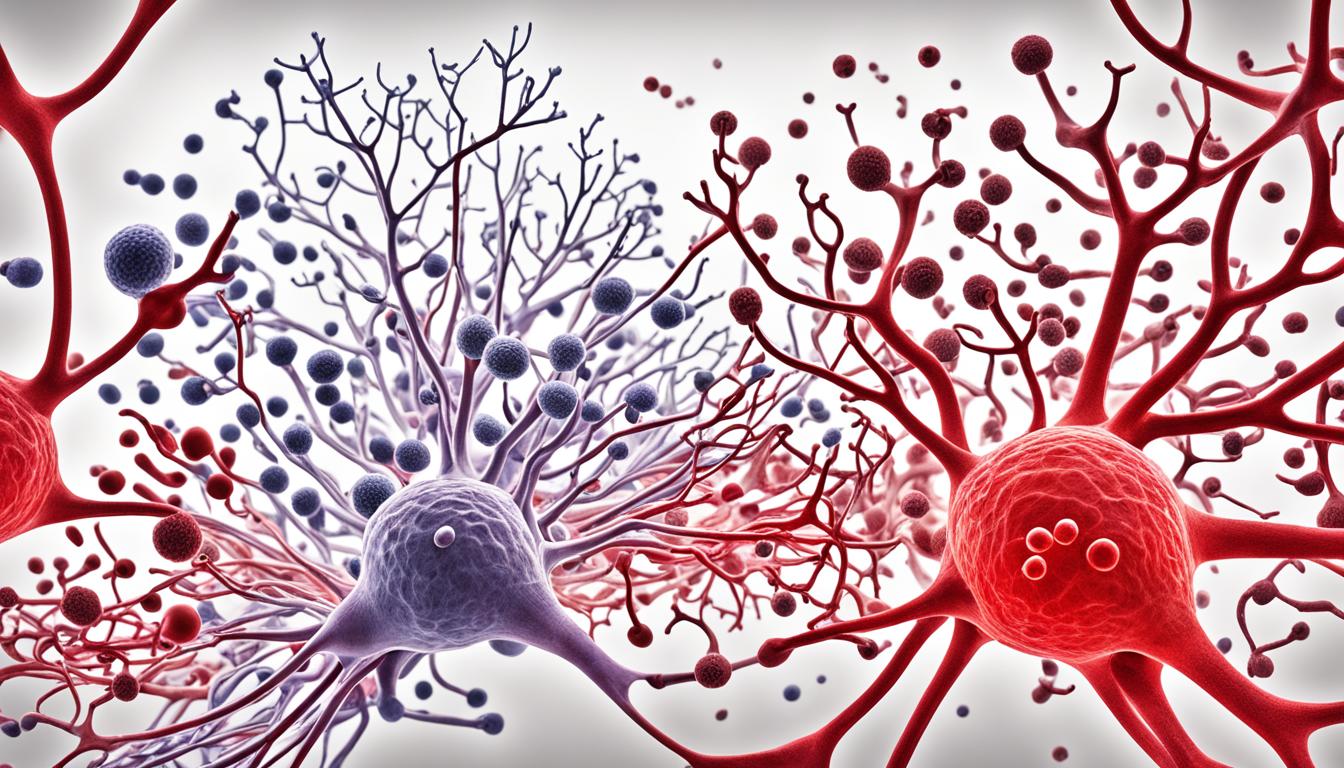Myelodysplastic syndromes (MDS) are a group of disorders affecting the bone marrow. They lead to poorly formed or not working properly blood cells. This happens when mature blood cells are not produced correctly in the bone marrow.
People with MDS often feel tired, have trouble breathing, and may find themselves getting easily bruised or bleeding. They can also get infections often and may notice tiny red spots on their skin. The cause of MDS is not always clear, but things like some treatments or exposure to chemicals can play a part in its development.
The World Health Organization has divided MDS into subtypes based on the kind of blood cells affected. This division helps doctors decide on the best treatment and understand what to expect.
For MDS, treatments range from supporting the body to withstand the condition to more aggressive chemotherapy or even a stem cell transplant. Doctors choose the best approach based on the type and the severity of the disease. Supporting care helps manage symptoms, while procedures like chemotherapy aim to slow MDS’s progress. A stem cell transplant is the only treatment that might cure MDS for some people.
How MDS turns out for someone can vary a lot and depends on many things. These include the subtype of MDS, which risk group someone falls into, and how they respond to treatment. It’s crucial to keep up with regular check-ups and stay on top of any health issues that might arise.
Key Takeaways:
- Myelodysplastic syndromes (MDS) are a group of bone marrow disorders characterized by poorly formed or dysfunctional blood cells.
- The exact cause of MDS is often unknown, but exposure to certain chemicals like chemotherapy and benzene may contribute to its development.
- MDS can lead to symptoms such as fatigue, shortness of breath, anemia, easy bruising or bleeding, frequent infections, and petechiae.
- The World Health Organization classifies MDS into different subtypes based on the specific type of blood cells involved.
- Treatment options for MDS include supportive care, chemotherapy, immunotherapy, and stem cell transplant, depending on the subtype and severity of the disease.
Symptoms and Diagnosis of Myelodysplastic Syndromes
Myelodysplastic syndromes (MDS) show many symptoms. The symptoms depend on which blood cell type is affected. Common signs are fatigue, weakness, and pale skin.
- Shortness of breath
- Frequent infections
- Easy bruising or bleeding
- Petechiae (pinpoint-sized red spots)
Getting an early MDS diagnosis is key. Healthcare workers use tests when MDS is suspected. These tests include a complete blood count (CBC) to look at the blood’s cell counts.
This can show if there are too few red or white blood cells. Also, a blood smear test might be done. It looks at the blood under a microscope for any unusual cell shapes.
- Bone marrow aspiration and biopsy: They collect a bone marrow sample to look closely at the cells.
- Peripheral blood smear: A sample of peripheral blood is examined to see if there are abnormal cells.
- Cytogenetic analysis: This test looks at the genes of MDS cells. It helps find out the type of MDS and guides treatment.
These tests help pinpoint MDS. They also rule out other diseases with similar symptoms. The diagnosis is crucial for planning the right treatment.
Treatment and Prognosis of Myelodysplastic Syndromes
Treating Myelodysplastic Syndromes (MDS) aims to slow it down and ease symptoms. It helps manage complications too. Supportive care is key. It supports a patient’s overall health and well-being.
Support care involves blood transfusions and antibiotics. It also includes growth factors to boost red blood cell production. These help lessen symptoms and make life better. They also lower the chances of problems.
Chemotherapy can also be used in MDS treatment. It helps slow the disease. There are various chemo options, like low or high intensity. Immunotherapy is sometimes used too. This type of treatment uses the immune system to fight cancer.
A stem cell transplant is an option for some MDS patients. It can be the only chance for a cure. This process swaps diseased bone marrow with healthy stem cells. It helps grow new, healthy blood cells.
The outlook for MDS patients varies. It depends on factors like disease subtype and how the body responds to treatment. Regular check-ups are vital. They help keep the condition in check and catch any complications early. With quick and right treatment, the chances for MDS patients are good.

